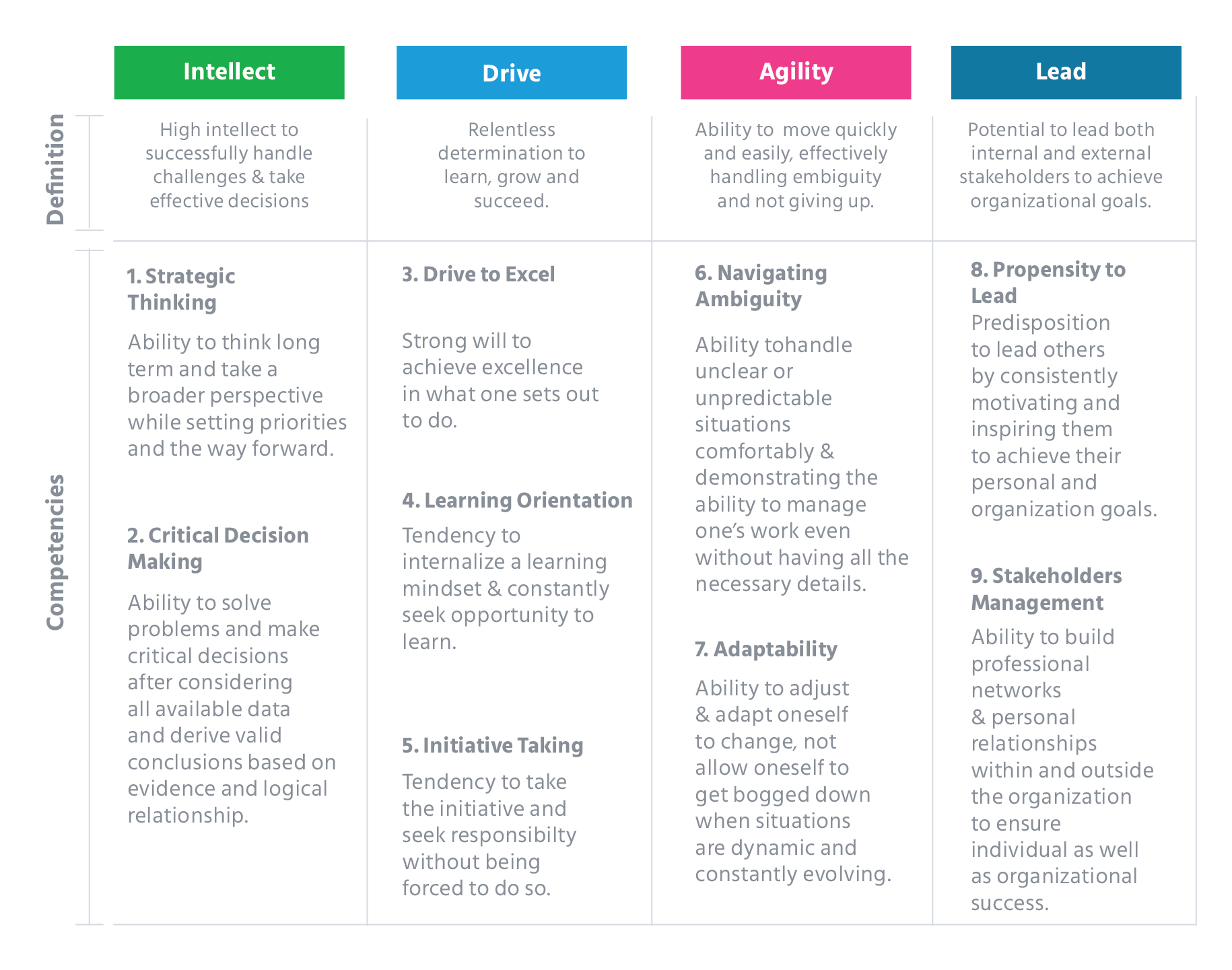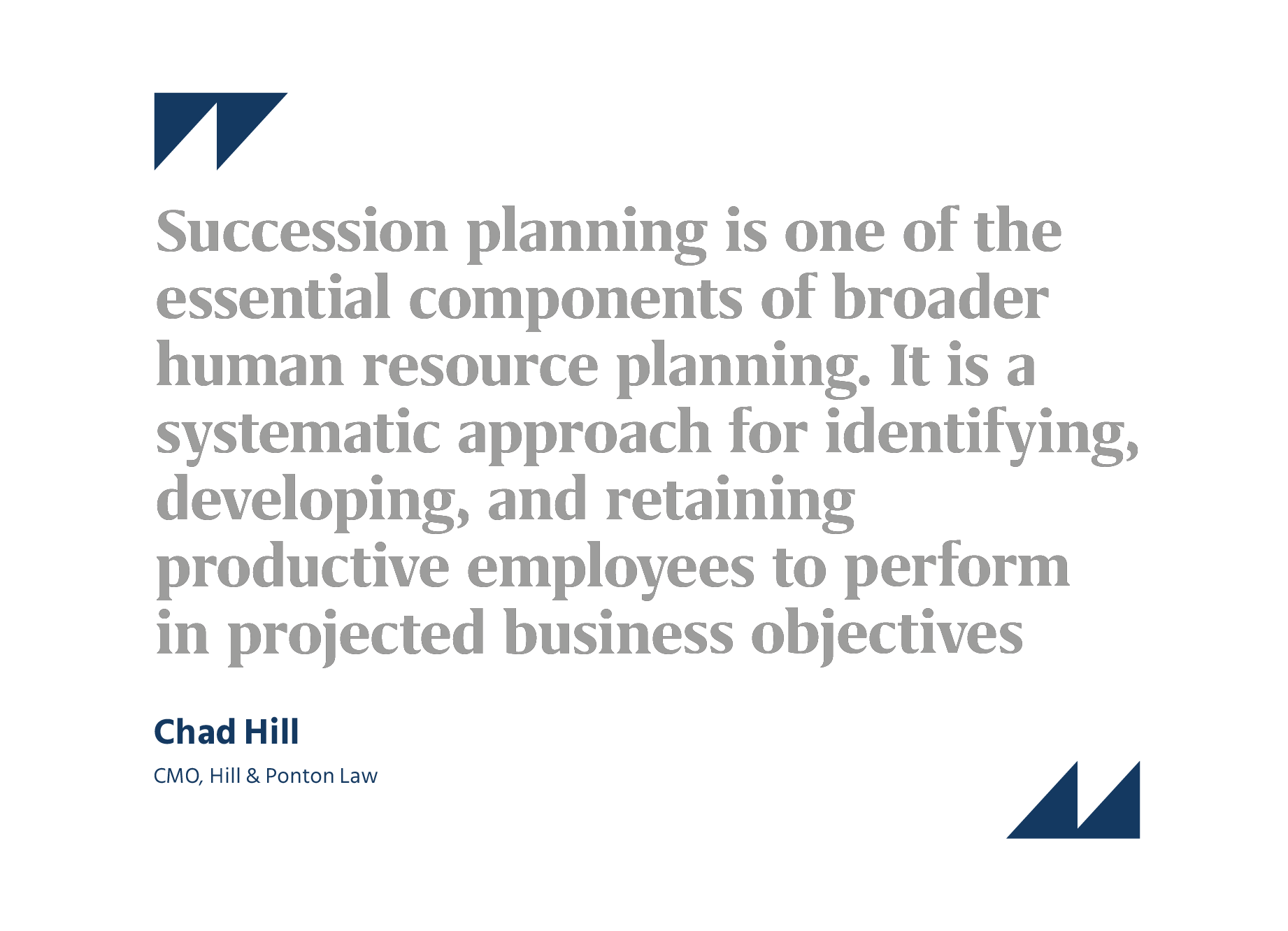Developing a succession plan helps provide continuity to the leadership pipeline. But to implement an integrated and effective succession and talent management plan, there first needs to be an explicit link drawn between what the organization values as talent and the core strategies of that organization. Mercer | Mettl can step in and bridge that gap for you, with its succession planning toolkit.
 Identify
Identify
Mercer | Mettl helps you build a competency framework suited to the present and future needs of your organization, define key competencies needed to succeed in critical roles in your organization, such as critical decision making, solving complex business problems, stakeholder management, etc., and, based on these competencies, nominate the candidates for assessment.
Mercer | Mettl’s scientific framework for high-potential identification enlists four broad competencies and nine sub-competencies from which organizations can choose or add.
“There are a few key qualities of success to look for in succession planning. One is to look for people who are willing to step outside their comfort zone and welcome challenges instead of fearing it. Also, it is important to look for people with key leadership skills who know how to empower and assist others to contribute their best. And also people who are lifelong learners and always growing. Do not count on current leaders being the ones to groom successors as they will naturally tend to choose people like themselves. ” – Stan Kimer, President, Total Engagement Consulting by Kimer.

Based on the chosen competencies, the number of employees, employees’ experience levels, and budget, Mercer | Mettl helps you select a tool that is best suited to the cost and complexity levels of your organization.
 Assess
Assess
Our suite of tools and assessments can easily be customized for each employee level. For example, many organizations prefer to administer online assessments (which evaluate skill, personality, and/or behavior) for junior employees or in case of a high number of test-takers, due to its high validity and cost-effectiveness. Virtual Assessment & Development Centers (VADCs) simulate traditional ACDCs and are best suited for mid-level managers and individual contributors. They weed out logistical hassles, making the process time and cost-efficient. Blended ACDCs bring together on-field programs and online assessments for an integrated approach to talent management and are highly recommended for mid to senior-level leadership profiles. Structured 360-degree feedbacks are also an excellent tool to be used in conjunction with other tools for a holistic picture. Each tool has its strengths and is thus mapped to an organization’s set of customized competencies to gauge readiness and approach the future objectively.
 Plan
Plan
Mercer | Mettl’s reports are customizable and easy to understand. A dedicated team of subject matter experts can help you map candidates on a nine-box succession planning grid to decide an appropriate developmental plan for identified successors.
 Act
Act
Mercer | Mettl’s advanced analytics and post-program assessments empower your organization to track the identified high-potentials on their standing in the readiness journey of becoming capable successors.
“Succession planning is a strategy for identifying and developing future leaders at your company and not only the top positions but all key, major roles at all levels. It helps the business in getting prepared for all the outcomes and possibilities in advance. The workers and employees that have high-potential are circled in advance for the potential succession. The most important thing to remember would be to identify the employees and have a plan in advance. We have to look for those people who display the skills necessary to thrive in higher positions, regardless of their current title. Plus, they should have immense leadership qualities and brilliant communication skills. Waiting for some crisis to happen can be very dangerous. So, it is better to test run the employees and your plan. Try to promote in-house talent rather than hiring from outside as loyalty plays a major role.” – Jennifer Willy, Editor, Etia.Com.









 Behavioral Competencies
Behavioral Competencies Cognitive Competencies
Cognitive Competencies Coding Competencies
Coding Competencies Domain Competencies
Domain Competencies
















 Identify
Identify
 Assess
Assess Plan
Plan Act
Act Succession planning is emerging as a critical business strategy for future-proofing businesses in the current market scenario, with baby boomers retiring and intense competition in the market.
Succession planning is emerging as a critical business strategy for future-proofing businesses in the current market scenario, with baby boomers retiring and intense competition in the market.









Would you like to comment?